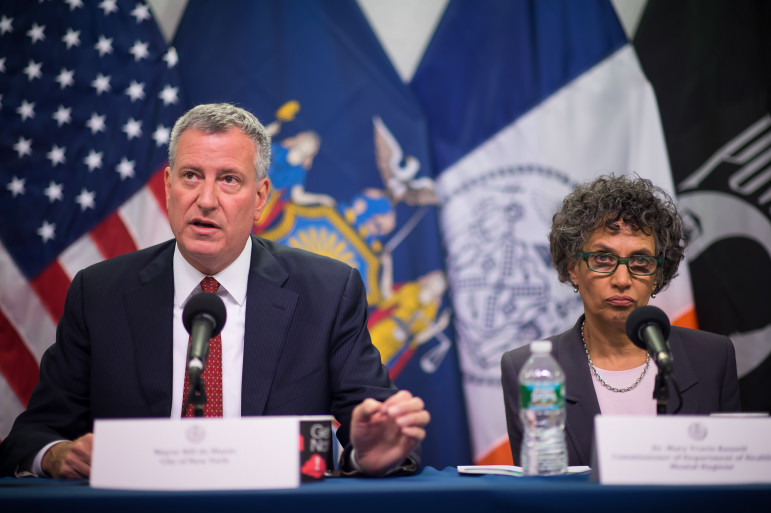
Rob Bennett/Mayoral Photo Office
Bassett has played a central role in the city's response to several health crises.
Crisis is part of the gig for the chief health official in the nation’s largest city, and Dr. Mary Bassett has dealt with her share of emergencies in the two years she’s served as commissioner of the Department of Health and Mental Hygiene. First there was Ebola, followed by Legionnaires’, and now comes Zika—and those are just the ones the public has heard about. New York City is also seeing an outbreak of whooping cough, Bassett told a Thursday briefing at the CUNY Graduate School of Journalism.
But as Bassett sees it, her job is as much about confronting the “enduring disparities” that characterize public health in New York City as it is about responding to sudden threats. The map of disease and death in the city reflects “patterns of marginalization,” she told members of the Center for Community and Ethnic Media, “patterns that I am determined to talk about and ameliorate.”
Among the more striking examples: Life expectancy in Brownsville is 11 years shorter, on average, than for residents of the financial district. “That means Brownsville has a life expectancy more along the lines of Sri Lanka, a developing country,” Bassett told the panel moderated by NY1 anchor Errol Louis, the director of urban reporting at the school and joined by Vania Andre, editor-in-chief of the Haitian Times, and I.
Bassett pointed to her Center for Health Equity as the tool she has deployed to combat health disparities, saying it will serve to gather data and take action. During the hour-long conversation, Bassett also:
• indicated that the threat of Zika to New York City is primarily one of people arriving here from affected countries, because it is not mosquito season in New York and the breed of bug that spreads the disease is not present in the city. However, a related breed of insect, the “Asian Tiger” mosquito, does exist in the five boroughs, and DOHMH is exploring what implications its presence might have.
• said that the de Blasio administration handled last summer’s Legionnaires’ outbreak “as well as I imagine we could have done” but added: “What we didn’t do as well was communicate with people about it.” What made it difficult, she said, was the disease’s incubation period, which meant new cases and deaths occurring even after water-cooling towers were cleaned, leading to the impression that the disease was spreading when it was actually under control. She said improvement in rules regarding cooling towers meant that the response would be more efficient if another outbreak occurs, which is likely: Because the bacteria that causes the ailment is endemic, risk of the disease can never be eliminated, Bassett said.
• defended the city’s change of policy regarding metzitzah b’peh, the circumcision practice in which a mohel sucks blood from the wound, which has been linked to infections and death in infants. A Bloomberg-era policy of requiring parents to confirm their informed consent was simply being ignored, Bassett indicated, so the de Blasio administration moved to an approach that has medical staff distribute information to parents at the time of birth rather than ask religious officials to do it on the day of a sacred ceremony. There was never a ban, she said: “This was all informational.”
• chalked up the low uptake of pre-exposure and post-exposure HIV preventive medications to doctors ‘ reluctance to tell patients anything that might undermine the message that wearing condoms is essential. Bassett said DOHMH is experimenting with “public-health detailing,” akin to the methods used by pharmaceutical companies, to get doctors more comfortable discussing those drugs.
• said her agency tries to ensure that parents who ask for religious exemptions to vaccination requirements have legitimate reasons for doing so. A bigger problem than non-vaccination, Bassett said, is late immunization. Children are supposed to get the shots as infants, but sometimes don’t do so until they enter school and are required to receive them. That gives disease a chance to take hold.








